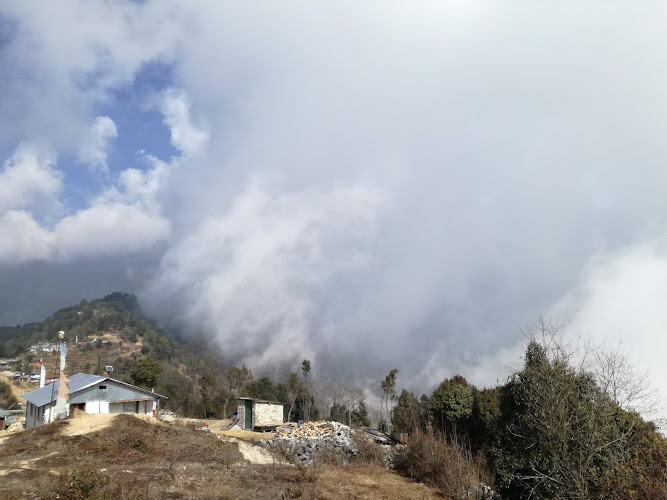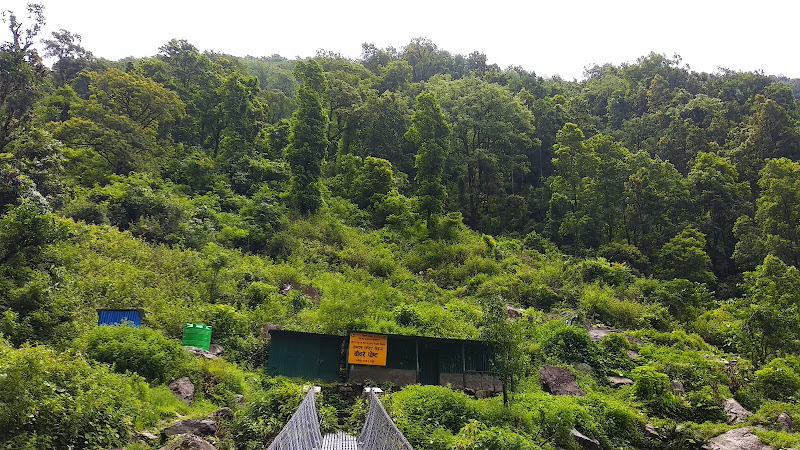


Langtang NATIONAL PARK - Earthquake Recovery & Red Panda Conservation
Helambu, 45007
When the earth shook on April 25, 2015, Langtang village vanished beneath 40 million tons of rock and ice. The avalanche triggered by Nepal's devastating earthquake hit with a force half as powerful as the atomic bomb dropped on Hiroshima, erasing an entire community in seconds. Three hundred lives were lost, and only a single house survived the catastrophic wave that swept through this Himalayan valley. Yet today, Langtang stands as Nepal's most inspiring story of resilience, where a rebuilt village welcomes trekkers back to one of Asia's most important red panda habitats and a cultural crossroads that has quietly flourished for centuries.
Just 113 kilometers north of Kathmandu, Langtang National Park became Nepal's first Himalayan protected area when it was established in 1976, covering 1,710 square kilometers across the Rasuwa, Nuwakot, and Sindhupalchok districts. While other iconic trekking destinations require multi-day journeys to reach, Langtang's southern boundary sits merely 32 kilometers from the capital, making it the closest high-altitude wilderness to any major city in Nepal. This accessibility hasn't diminished its wild character. The park stretches from subtropical forests at 1,000 meters to the ice-draped summit of Langtang Lirung at 7,245 meters, creating climate zones that transition from steaming rhododendron thickets to windswept alpine plateaus where snow leopards hunt blue sheep across vertical terrain.
The earthquake recovery transformed Langtang from a destination into a pilgrimage of solidarity. Within months of the disaster, survivors began clearing debris by hand. Six months later, reconstruction began not on the old site, but 200 meters ahead where the valley widens and avalanche danger diminishes. Three years of community-driven rebuilding followed, largely organized through the Langtang Management and Reconstruction Committee rather than distant aid organizations. When the trail officially reopened in 2017, trekkers returned to find a village that looked different but stood stronger, with earthquake-resistant construction techniques replacing traditional methods. Today, twenty guesthouses accommodate over 500 visitors simultaneously, and the community has grown from the ashes with remarkable determination, though some elders lament that urgency sacrificed aesthetics and the rebuilding disrupted social traditions tied to the land itself.
What draws visitors beyond the recovery narrative is Langtang's status as one of the planet's critical red panda habitats. The park protects nearly 25 percent of Nepal's entire red panda population, with dedicated anti-poaching units and community monitoring programs safeguarding these endangered tree-dwelling mammals that thrive in the temperate oak and rhododendron forests between 2,600 and 3,600 meters. Langtang was also the first national park in Nepal specifically focused on snow leopard conservation, and these ghost cats still prowl the high ridges alongside Himalayan black bears, musk deer, Himalayan tahr, and grey langur monkeys. More than 250 bird species inhabit the park, including Nepal's national bird, the iridescent Impeyan pheasant, whose metallic plumage flashes through the undergrowth like living jewelry.
The trek from Syabrubesi at 1,467 meters follows the Langtang Khola upstream for 65 kilometers round trip, passing through reconstituted Langtang village at 3,430 meters before reaching Kyanjin Gompa at 3,830 meters. This ancient monastery gives its name to the scattered settlement where a yak cheese factory continues a tradition established by Swiss experts in 1952, making it Nepal's first commercial cheese operation. The factory produces 14 tons of cheese annually plus 2,000 kilograms of yak butter used for Tibetan tea and monastery butter lamps, a cultural fusion where European techniques preserve traditional Tibetan pastoral life. The knowledge passed from Swiss cheesemaker to Pasang Norbu to his son Gyalbu represents the layered history of this valley, where Tamang people of Tibetan origin have maintained their distinct language, monasteries, and mountain-centered spirituality for generations.
Kyanjin Gompa serves as base camp for side trips to Tserko Ri and Kyanjin Ri viewpoints, but the valley's spiritual heart lies higher still. At 4,380 meters elevation, the sacred Gosainkunda lakes shimmer in a glacial basin within the park's boundaries, their turquoise waters surrounded by prayer flags and stone shrines. Hindu mythology holds that Lord Shiva created Gosainkunda by piercing a glacier with his trident to quench his thirst after swallowing poison to save the world. During Janai Purnima, the August full moon festival, thousands of Hindu pilgrims ascend to these 108 interconnected lakes to renew their sacred threads and bathe in waters believed to wash away sins. The convergence of Hindu and Buddhist pilgrims at this altitude testifies to Langtang's role as a crossroads of faith, where Tamang Buddhist gompa coexist with Brahmin-Hindu shrines.
The journey begins with a six to eight-hour drive from Kathmandu to Syabrubesi on roads that deteriorate beyond Trishuli, winding through terraced hillsides where subtropical vegetation gives way to chirpine and eventually to the temperate oak forests that cloak the lower valley. The trail traverses suspension bridges, passes through villages like Lama Hotel and Mundu, and gradually ascends through zones where vegetation thins and yak pastures dominate the widening valley floor. Daily hiking averages five to six hours, manageable even for trekkers without extreme altitude experience, though the air thins noticeably above 3,500 meters.
Langtang's proximity to Kathmandu makes it Nepal's most accessible serious mountain experience, yet the 2015 earthquake paradoxically deepened its appeal. Trekkers now walk through a landscape marked by both geological violence and human determination, where every rebuilt teahouse and replanted prayer flag represents a community's refusal to abandon their ancestral home. The valley that once seemed forgotten in the shadow of Everest and Annapurna has found new meaning as a testament to survival, where red pandas still slip through rhododendron branches and cheese-makers continue traditions that bridge continents and centuries.
Park Features & Amenities
♿ Accessibility
- ✓ Wheelchair-accessible car park
- ✓ Wheelchair-accessible entrance
🏃 Activities
- ✓ Hiking
🏗️ Amenities
- ✓ Barbecue grill
- ✓ Picnic tables
- ✓ Public toilet
- ✓ Slides
🎠 Children
- ✓ Good for kids
- ✓ Kid-friendly hikes
- ✓ Playground
🐕 Pets
- ✓ Dogs allowed
Visitor Information
🕐 Best Times to Visit
Spring (Mar-May): Pleasant weather, blooming flowers
Autumn (Sep-Nov): Clear skies, comfortable temperatures
Early Morning: Best for wildlife viewing and photography
🗺️ Getting There
By Car: Helambu, 45007
Public Transport: Local buses and taxis available
Walking: Check distance from city center
💡 Visitor Tips
• Bring water and sun protection
• Wear comfortable walking shoes
• Check weather conditions before visiting
• Bring camera for nature photography
Explore More in Nepal
Nearby Attractions
Ready to Visit Langtang NATIONAL PARK?
Plan your visit to this amazing destination with our comprehensive travel guide and insider tips.
Seasonal Travel Guide
Weather & Best Time
Winter brings cool temperatures (5-15°C) with clear skies and snow-capped peaks. Perfect for mountain views but cold at higher altitudes.
Best Activities:
- Mountain viewing
- Cultural experiences
- Spa and hot springs
- Photography of snow peaks
- Indoor cultural activities
Travel Tips
- Visit during December-February for snow-capped views
- Pack warm clothing for cold temperatures
- Book hotels with heating facilities
- Plan for shorter daylight hours
Packing Suggestions:
- Warm winter clothing
- Thermal layers
- Warm hat and gloves
- Sturdy winter boots
- Hot water bottle
Quick Facts
Best time: Autumn (Sep-Nov)
Duration: 1-3 days
Difficulty: Easy
Cost: Budget-friendly